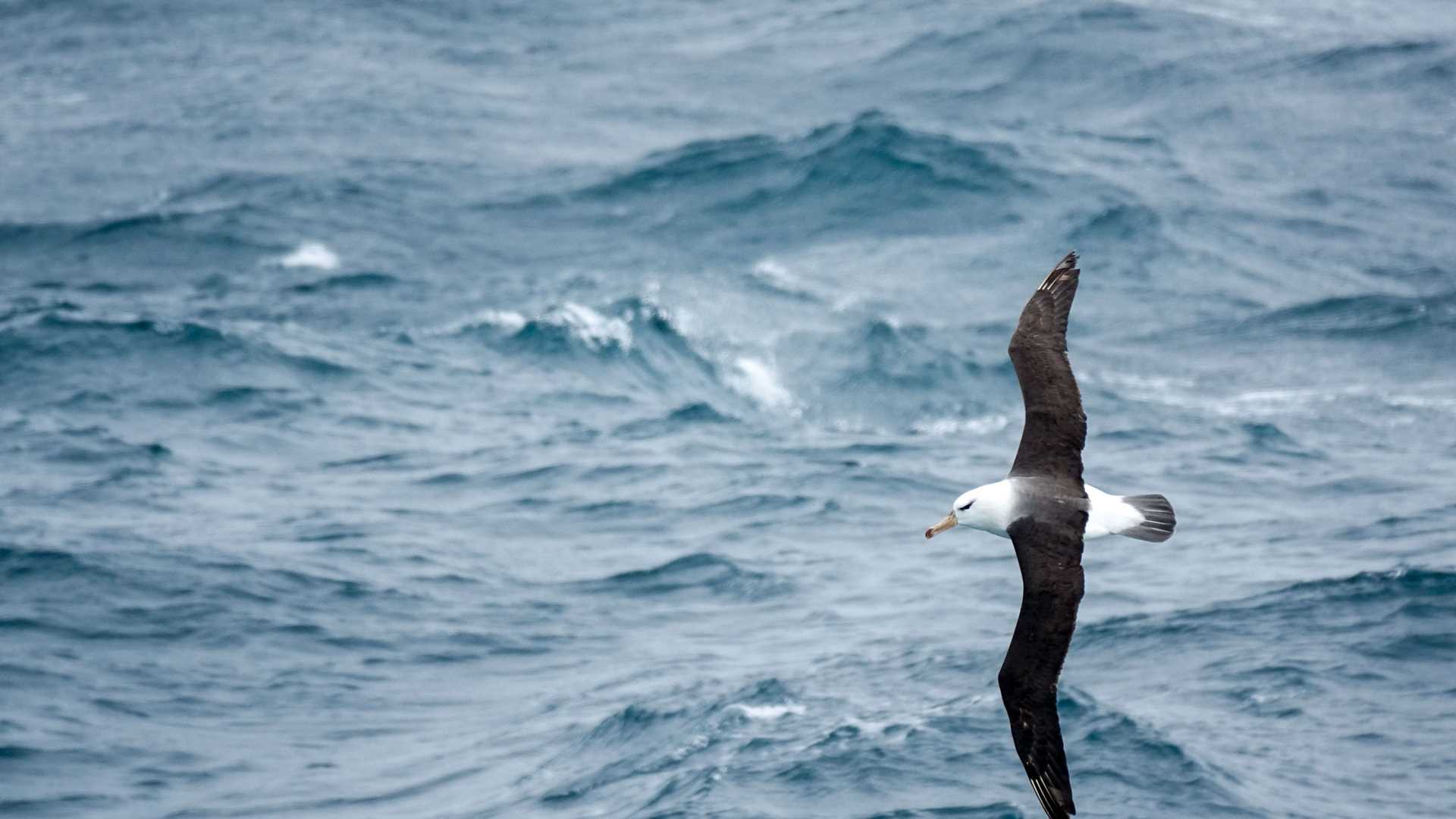Today we awoke in Drake Passage for a day of wind, waves, and seabirds! Although previsions for the crossing were not good, our bridge team managed to draw a course that rounded the low-pressure system, and as a result, we all enjoyed a more pleasant crossing with minimum movement. Thanks to that, most of our guests could attend our planned onboard activities and the first talk of the expedition, “Birds of the Southern Ocean,” by naturalist Javier Cotin. The talk was very timely, as the ship was surrounded by seabirds from stern to bow.
Black-browed, light-mantled, and grey-headed albatrosses accompanied us on our way to Antarctica, and we could even see a wandering albatross. Two of the light-mantled albatrosses, the so-called “Ferrari of the albatross,” followed the ship for quite some time. This species breeds, among other places, in the wild islands of South Georgia, and follows ships for the sheer pleasure of riding the winds that the vessel produces. This particular species has an impressive courtship display, which consists of a synchronized aerial exhibition where male and female fly together in perfect harmony.
During our afternoon, we carried out the mandatory IAATO presentations and the bio-decontamination procedures that prevent the inadvertent importation of any foreign or invasive species into Antarctica.
In the blink of an eye, the day was over, and we continued on our way to the South Shetlands Islands, which were seen first by the Spaniard Rosendo Porlier, captain of San Telmo. This ship got lost on its way to Peru, and due to the winds and strong currents, got stranded at Livingston Island (in the South Shetlands) in September 1819. The 644-member crew of San Telmo were the first ones to sight Antarctica and the South Shetlands, but they never survived to tell their story.







